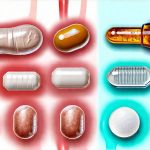An irritated bladder is a frustratingly common experience for women, often leading to frequent urination, urgency, discomfort, and even pain. It’s not simply about needing to go more often; it’s the anxiety around where the nearest restroom is, interrupting daily activities, and feeling generally unsettled. Many factors can contribute to bladder irritation, ranging from infections and hormonal changes to dietary choices and lifestyle habits. While medical evaluation and treatment are crucial for diagnosing the underlying cause (and should always be sought), understanding how diet impacts bladder health can empower women to proactively manage their symptoms and improve their quality of life. This article explores foods that may help soothe an irritated bladder, offering practical insights into building a more bladder-friendly eating plan.
It’s important to remember that everyone is different, and what triggers one person’s bladder might not affect another. There isn’t a ‘one-size-fits-all’ diet for bladder health. However, there are general principles and food groups known to be gentler on the bladder, while others commonly exacerbate symptoms. The goal isn’t necessarily about strict restriction but rather mindful selection and identifying personal triggers through careful observation. A food diary can be an invaluable tool in this process, helping you pinpoint which foods consistently lead to flare-ups. This article provides a starting point for exploring those possibilities and making informed choices toward greater comfort and control.
Dietary Strategies for Bladder Calm
A cornerstone of bladder health management is identifying and reducing consumption of common bladder irritants. These are substances that can directly inflame the bladder lining or increase its sensitivity, leading to increased urgency and frequency. The most well-known culprits include caffeine, alcohol, artificial sweeteners, spicy foods, acidic fruits (citrus, tomatoes), carbonated beverages, and chocolate. However, simply eliminating these isn’t always enough; a more holistic approach focusing on incorporating calming foods is equally important. Prioritizing hydration is also paramount. Paradoxically, while frequent urination might seem counterintuitive to drink more fluids, dehydration actually concentrates urine, making it more irritating to the bladder. Aim for 6-8 glasses of water daily, spaced throughout the day. If you’re unsure about what drinks are safe, consider reading how to stay hydrated without causing further irritation.
Beyond avoiding irritants and staying hydrated, focusing on foods with anti-inflammatory properties can be incredibly beneficial. Chronic inflammation often underlies bladder irritation, so incorporating foods known to combat inflammation can address the root cause. Foods rich in antioxidants, such as berries, leafy greens, and fatty fish (salmon, mackerel), are excellent choices. Fiber also plays a role – it helps regulate bowel movements, which indirectly impacts bladder health by reducing pressure on the pelvic floor. A well-balanced diet that emphasizes whole, unprocessed foods is generally the most supportive approach for overall health, including bladder function.
Finally, consider the timing of your meals and fluid intake. Avoid large fluid intakes right before bedtime to minimize nighttime trips to the bathroom. Eating smaller, more frequent meals can also reduce pressure on the bladder. Experimenting with different dietary changes and tracking your symptoms is key to discovering what works best for you. Remember that consistency is vital – it takes time to see the benefits of dietary modifications. If you suspect certain foods are causing issues, review are certain foods bad for a more detailed look at potential triggers.
Soothing Foods to Incorporate
Several food groups are known for their calming effect on the bladder. These aren’t miracle cures, but they can contribute significantly to reducing irritation and improving comfort. Blueberries, for instance, contain compounds called anthocyanins which have anti-inflammatory properties that may help soothe the bladder lining. Similarly, cucumbers, with their high water content, provide hydration without being overly irritating, while also possessing mild diuretic effects that can help flush out toxins. Pears are another excellent choice – they’re gentle on the stomach and bladder, offering a good source of fiber.
Other beneficial foods include oatmeal, which is easy to digest and provides sustained energy without causing spikes in blood sugar (which can sometimes impact bladder control). Sweet potatoes offer beta-carotene, an antioxidant that supports overall health and may reduce inflammation. Bananas are rich in potassium, which helps regulate fluid balance and nerve function. Incorporating these foods into your regular diet doesn’t require drastic changes. Simply swapping out a sugary snack for a handful of blueberries or adding a side of sweet potato to your dinner can make a difference.
Importantly, pay attention to how your body responds to each food. Keep a detailed food diary noting what you eat and any associated bladder symptoms. This will help you identify personal sensitivities and tailor your diet accordingly. Don’t be afraid to experiment with small changes and gradually introduce new foods to assess their impact.
The Role of Probiotics & Fermented Foods
Probiotics, the beneficial bacteria found in fermented foods like yogurt (with live cultures), kefir, sauerkraut, and kimchi, are increasingly recognized for their role in overall health, including bladder function. A healthy gut microbiome is closely linked to a strong immune system and reduced inflammation – both crucial for bladder health. An imbalance in gut bacteria can contribute to increased intestinal permeability (“leaky gut”), allowing inflammatory substances to enter the bloodstream and potentially exacerbate bladder irritation.
- Probiotics help restore balance to the gut microbiome, strengthening the gut barrier and reducing inflammation.
- Incorporating fermented foods into your diet can be a natural way to boost probiotic intake.
- Look for yogurt with “live and active cultures” on the label, and choose sauerkraut or kimchi that hasn’t been pasteurized (pasteurization kills beneficial bacteria).
However, it’s important to note that not all probiotics are created equal. Different strains have different effects, so experimenting with various fermented foods or considering a probiotic supplement (after consulting with your healthcare provider) may be necessary to find what works best for you. Start slowly and gradually increase intake to avoid digestive upset.
Hydration Beyond Water: Herbal Teas & Broths
While water is the gold standard for hydration, other fluids can also contribute to bladder health – specifically herbal teas and broths. Certain herbal teas, like chamomile and ginger tea, possess anti-inflammatory properties that may help soothe an irritated bladder. Chamomile has long been used for its calming effects, while ginger offers potent anti-inflammatory benefits. However, avoid herbal teas containing caffeine or known bladder irritants like citrus peels.
Bone broth is another excellent hydrating option. It’s rich in collagen and amino acids which support gut health and reduce inflammation. The electrolytes in bone broth also help restore fluid balance. Homemade bone broth is ideal, as it avoids the additives found in many commercially prepared versions.
- Sip on herbal teas throughout the day, but avoid drinking large amounts right before bedtime.
- Choose organic, caffeine-free herbal tea options.
- Prepare homemade bone broth using high-quality bones and vegetables.
Identifying & Managing Personal Triggers
The most effective bladder-friendly diet is one tailored to your individual sensitivities. This requires careful self-observation and a commitment to identifying your personal triggers. A detailed food diary is an essential tool. Record everything you eat and drink, along with any associated bladder symptoms (frequency, urgency, pain). Be specific about the timing of symptoms relative to meal times.
- Keep a food diary for at least two weeks, recording all meals, snacks, and beverages.
- Note any accompanying bladder symptoms – frequency, urgency, pain level, etc.
- Look for patterns and correlations between specific foods and your symptoms.
Once you’ve identified potential triggers, try eliminating them from your diet one at a time to see if your symptoms improve. Reintroduce foods gradually to confirm whether they truly are causing irritation. Remember that it may not always be the food itself but rather the amount consumed or how it’s prepared. For example, a small portion of tomato sauce might be tolerated, while a large serving could trigger symptoms. Understanding foods that keep the bladder calm can help you build a long-term plan. This process requires patience and persistence, but the rewards – greater comfort and control over your bladder health – are well worth the effort.





















